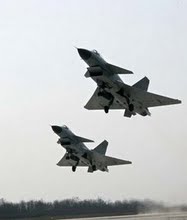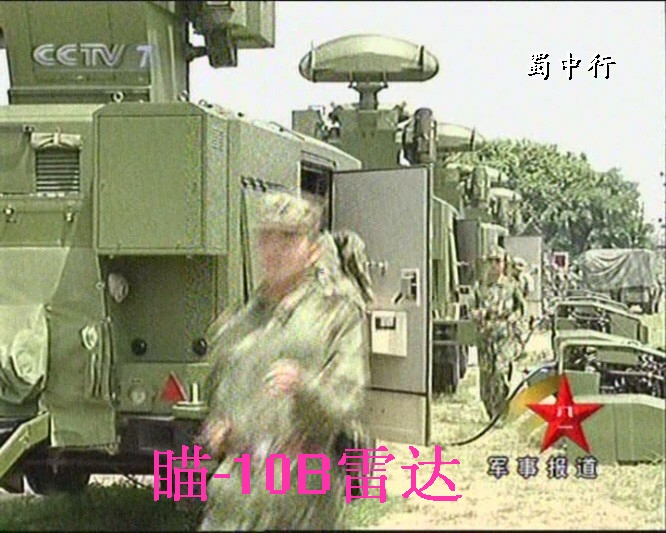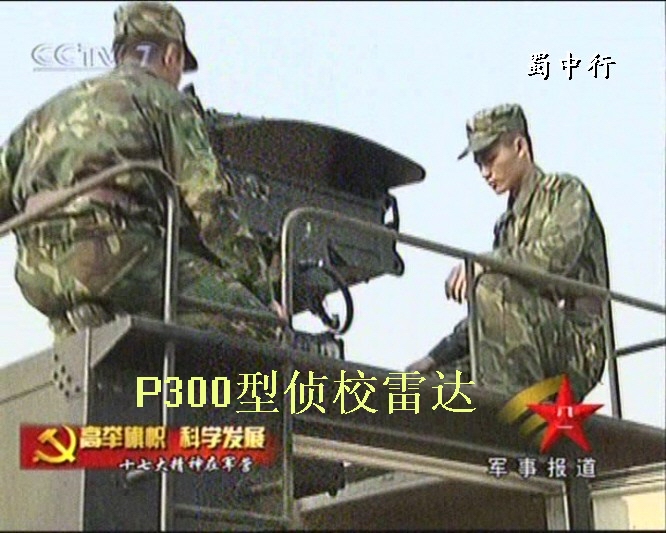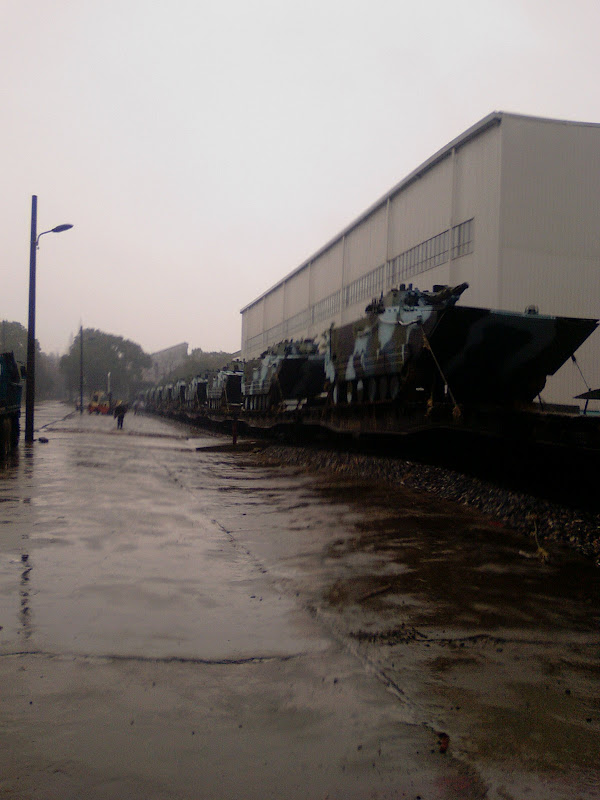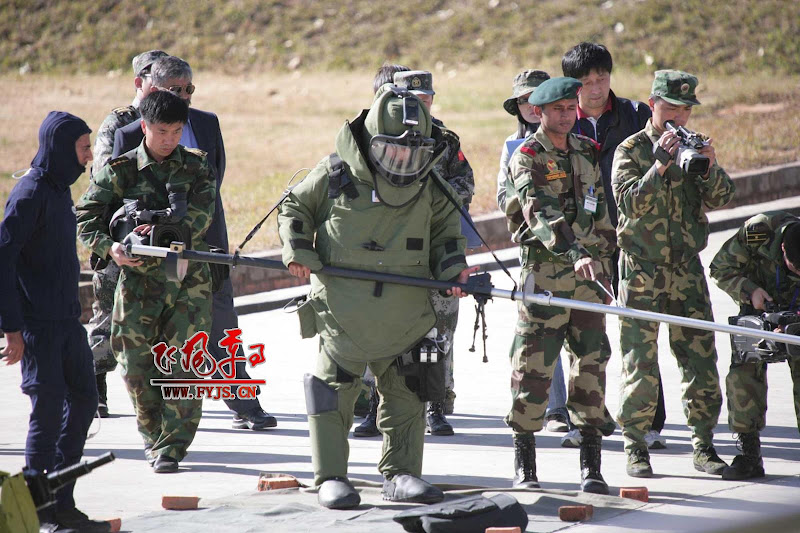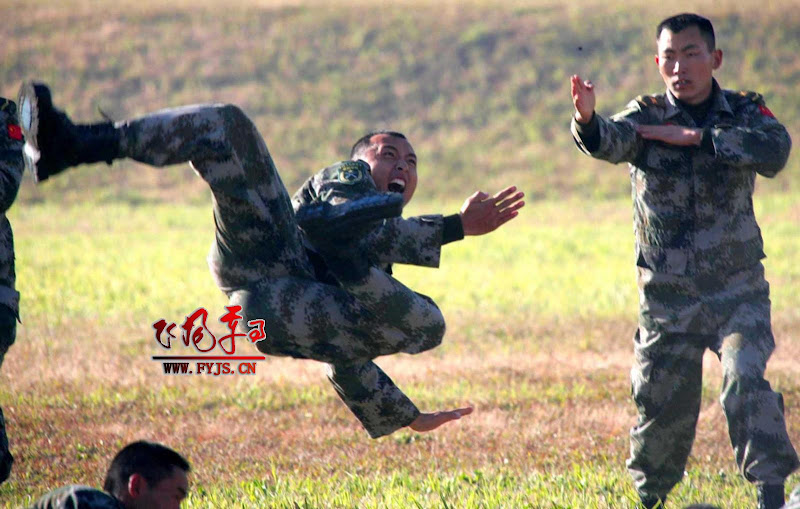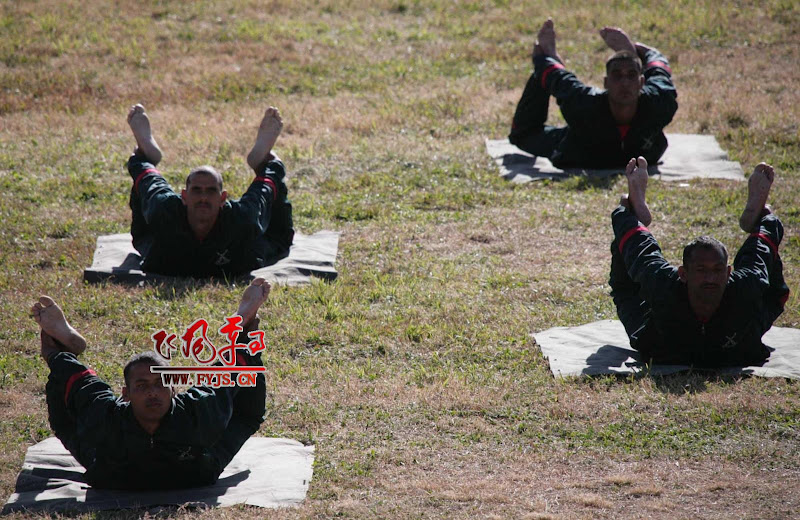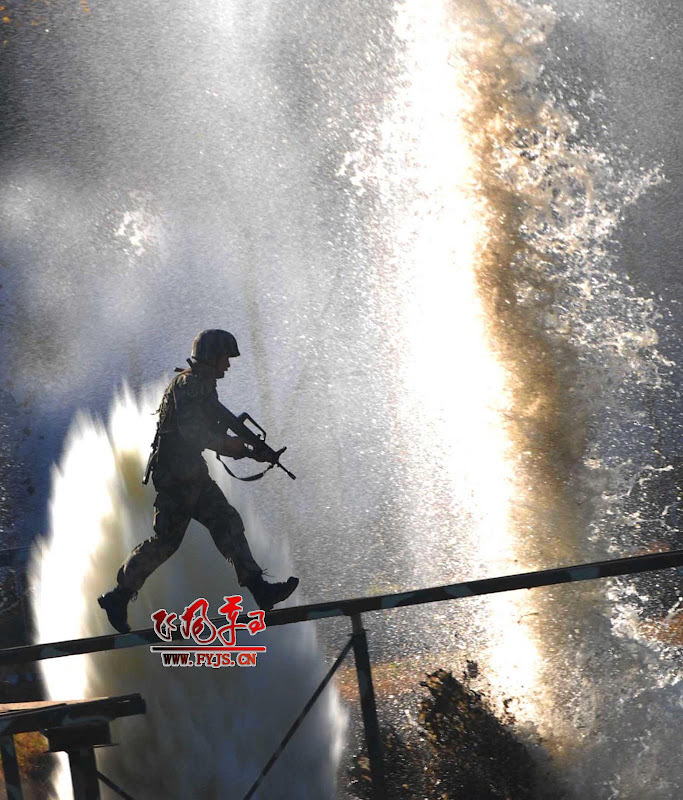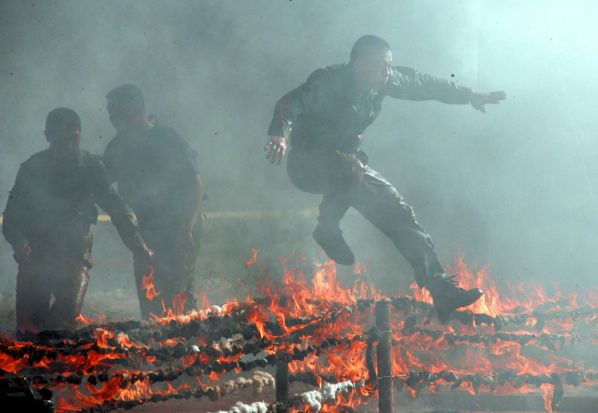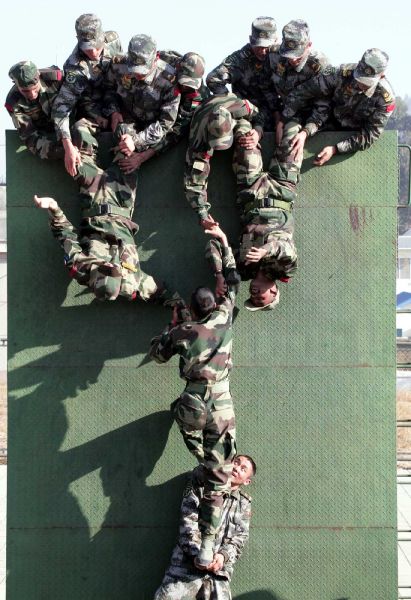Tuesday, December 25, 2007
Monday, December 24, 2007
Saturday, December 8, 2007
China's Next Generation Fighter to be jointly designed by SAC & CAC
In the middle of November, AVIC-I on its website announced that Shenyang Aircraft Designing Institute is going to delivering the detail design drawing of "Key Model" with AVIC-I’s other preponderant Institutes with advantages.
An artist's imagnination about China's future fighter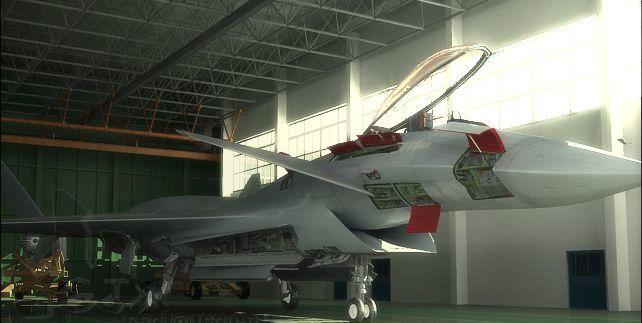
A realistic 3D image generated by software, was once believed as China's next generation fighter.
In the news story, this "Key Model" is eyed by SAC (Shenyang Aircraft Corporation)'s heads as a significant milestone in AVIC-I's Development. This so-called "Key Model" is probably one sub item of China's next generation air combat system project, which is a family jointly designed by SAC and CAC (Chengdu Aircraft Corporation), additionally including XAC (Xi’an Aircraft Corporation) and FAI (First Aircraft Institute) of AVIC-I possibly.
PLA admits F-22's great advantages, but does not plan to follow U.S.' way.
Unlike F-22's 4S characters, China has been eager to find an unusual countermeasure method in Network-Centric Warfare age. China foresees that a wide and integrated air situational awareness and combat system can face the challenge from stealth fighter. So China's next combat aircraft would not be one single fighter but an integrated JACS (Joint Air Combat System) family, which includes stealth strike fighter, Long-Range AA missile Launching platform and anti-stealth UAV.
The new striker probably has a low observation (RCS <0.3 href="http://picasaweb.google.com/cuteftpster/CoolMilitary2/photo?authkey=WeThqOU8RK4#5141495726054384626">
"Dark Sword" UAV
Although SAC's "Dark Sword" has displayed China's pre-research in UCAV area, China dose not trust UCAV can enter real combat in next 20 years.
At present J-10 has entered mass production and J-11B is near its final stage. When Russia's new Su-35 introduced in MAKS 2007, PLA Air Force evaluates it as the most advanced improved 4th generation fighter, comparing with Typhoon and Rafael. But China has no interests on Su-35 because J-11B/BS is enough to PLA Air Force, which proposes to pay more energy on revolutionary combat aircraft.
Russia's New Su-35 in MAKS-2007
Meanwhile, AVIC-I dose declare to become one of world Top 500 Corporations in the year of 2010. So AVIC-I, the most powerful aviation enterprise in China, prefers to re-organize forces from its subsidiaries for PLA’s future airpower and then acquires greater capital support from China Government.
Tuesday, December 4, 2007
China YW-6 satellite tracking ship is in testing

This Yuanwang-6 was found in Shanghai in December, 2007. Some resources said that it is greatly improved in commanding and controlling system.
Yuanwang series Satellite Tracking Ships were firstly designed to support PLA's ICBM testing programmes and then now mainly carry the satellite and spaceship tracking mission.
At present, Yuanwang-5 is the newest ship in Yuanwang family. YW-5 was launched on 15 September 2006 and entered PLA Navy in 2007. Now YW-5 is involving the "Chang'e Lunar Satellite" programme.
In future, China is planning to launch TL Data Reply satellites to replace some control functions of Yuanwang ships, because Data Reply satellites surely have greater performance in China's manned space station and other deep space explorations.
Type 071 LPD ready to join PLA NAVY
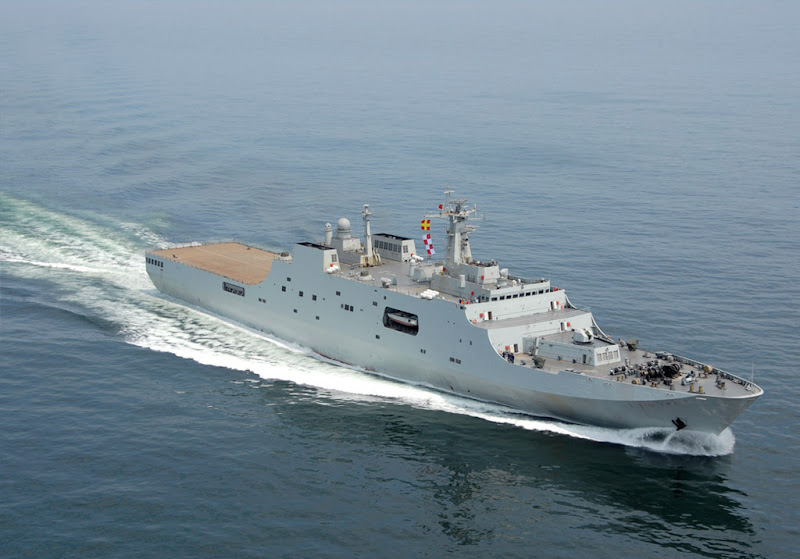
Type 071 Landing Platform Dock is also called as "Integrated Landing ship" in PLA Navy.
Unfortunately, people can not found any "point or area" air-defense missile system, which was once presumed to be on Type 071. Type 071 LPD will enter PLA Navy Southern Sea Fleet.
CCTV showed SLBM launching scene, possible JL-2

This news is from CCTV 7th-channel, which contains military news for PLA officers and other service people. Resources in China believe that it is JL-2 SLBM.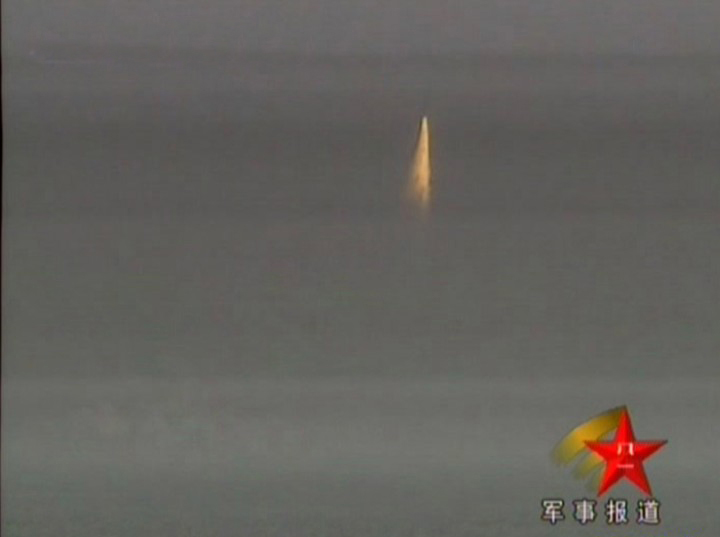
This video clip is to propagandise a professor in PLA Navy submarine warfare college.
This picture is considered as the closest shot of PLA navy Type 094 SSBN, which can carry 12 JL-2 SLBM.
Monday, December 3, 2007
China's Military Enterprises go public, foreign investment cautiously welcomed

Mr. Zhang Qinwei, Director of COSTIND
November 15, China's COSTIND (commission of Science Technology and Industry for National Defense) issued "Provisional Measures for Military Enterprises Shareholding Reform’s Implementation". This behavior showed that China has permit domestic listed corporation to buy and reform Military enterprises.
The "Provisional Measures" have cleared that Chinese military firms can be reformed and opened to public under 4 types: state-owned, state absolutely holding, state relatively holding, and state sharing.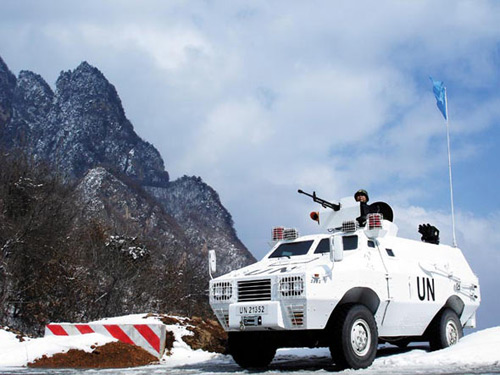
After COSTIND's authorization, present domestic state-controlling-holding listed companies can deal with state-run military enterprises by unitary or partial acquisition and re-organization.
To future domestic listed firms carrying on military products, the new "Provisional Measures" especially regulate special articles, including:
No changes of Controlling Shareholders can become effective without reporting to COSTIND and carrying procedures for approval;
The alternation of board chairman and general manager must be recorded on COSTIND;
The recruitment of oversea independent directors must be recorded on COSTIND;
The significant acquisition behavior initiated by buyer, who will hold over 5% percent sharing of listed company, must declare to COSTIND.
Besides, foreign capital also gets clear ways of entering Chinese military industrial area. The "Provisional Measures" regulate that state-owned and state absolutely holding are forbidden to be sold to foreign capital; state relatively holding military firms are limited to foreign investment and re-organized state sharing military companies are totally opened for foreign investors.
Recently, series of regulations have been issued by COSTIND for delivering more instructions on more reformative involvements from non-state-own firms and foreign investment.
Friday, November 30, 2007
Displacement of Type 054A Frigate Possibly underestimated
Outside usually estimates that Type 054 and 054A are in 3500-ton-level. But unconfirmed resource in PLA Navy indicated that displacement of Type 054/054A is underestimated: Type 054 to be 4300 tons in full-load displacement and Type 054A to 4500 tons.
According to PLA Navy’s previous standards, the displacement of frigate is usually below 2000 tons. PLA Navy's Type 053H2 and Type 053H3 both under 2500 tons. Even Type 052 "Luhu" Destroyer, China's most advanced warship in early 1990s, also did not exceed 5000 tons in full load displacement.

But advanced large displacement frigates developed in Western Europe drew the attentions of PLA Navy. Under the background of "Economic Centralization", PLA surely has great interests on multifunctional but cheaper frigates, which are capable to replace aging destroyers.
Obviously, Type 054 was developed for convoy duties and operating in low intensity marine conflict with "Point Defense Ability". A great larger Type 054 Frigate compare to Type 053 family can have longer endurance ability and operate under cover from land-based PLA Navy Aviation wings.
But the boom of China economy and Embassy bombed by US lead Chinese government to eye on more powerful national defense, especially greater sea power for protecting energy lifeline. The distinguished upgrade from Type 054’s "Point Defense Ability" to 054A’s "Area Defense Ability" just reflects PLA navy's demand in "Blue water" combat, in which the Aircraft Carrier Group is the main role.
The power system maybe is a critical argument to overthrow the rumor of heavier Type 054A. Due to poor engine manufacturing, Type 054’s CODAG propulsion system in all probability can not drive this 4500-ton hull in 20 Kts to cruise with aircraft carriers. However the situation in China is different.
The Varyag being reconstructed in Dalian Shipyard is eyed as a training platform and limitedly deployed in “yellow water”. For the great damages of Varyag power system when it sold in 1998, PLA can not fully recover it and operate as its designed maximum speed. So 4500-ton Type 054A propelled by CODAG is still acceptable in PLA’s first experimental carrier battle group, which has one Varyag carrier and 4-6 054A frigates.
On the contrary, 1-2 conventional or nuclear carriers built by China shipbuilders will become the real center of PLA Navy’s deep-sea battles groups. And 4-6 PLA DDGs (like Type 052B, Type 051C or Type 052C) equipped with more powerful propulsion system will be the main protective surface combatants for carrier group.
Tuesday, November 13, 2007
China denies type 05 SPH copied from Russia
PLA Army's Type 05 Self-Propelled Howitzer, which is opened in PLA 80th anniversary exhibition in 2007, is usually considered as a copy of
Yi Qunzhi, One of Type 05 Developing Team from PLA General Armament Department, told that the project of Type 05 SPH was initiate in 1991 and was to absorb western countries'
As worldwide armies usually hesitated on
From Yi’s conclusion, however, at present PLA has been pleased with the performance of Type 05 and believes it reaching leading position on world. In PLA's testing, Type 05 SPH 52-calibre gun (
The autonomous fire control functions are controlled by on-board computer. In the automatic mode, the gun is automatically engaged targets and relayed by fire control data provided by the ballistics computer
Chinese expert explained the huge size of Type 05 turret is due to the more digital fire control devices inside for fast response and accurate striking. Another reason is the turret has automatic ammunition loading mechanism to ensure the demand of high rate of fire.
During the early argumentation, Type 05 once chose between combustible cartridge and modular propellant charge. But PLA finally abandoned the modular ammo charge because of technological difficulties.
Type 05 SPH certainly will become the main artillery batteries in PLA army-division level ground forces. Now
Yi said that PLA’s next generation SPH or ground long-range firepower neutralization system will be in shortened development period and finished product will probably be out in 2012.
Thursday, November 8, 2007
China accuses Hacking operation from Taiwan and U.S.

In October, Chinese Ministry of State Security (MSS) used a state-run paper media to unveil that China has been being attacked from more and more foreign organized hackers and Chinese national security is being threatened by cyber area.
"Global Times", quoting officials from Ministry of State Security, said that tens thousands of oversea remote administration computers are monitoring Chinese victim computers through spy software and foreign intelligence agencies has set up special organizations to penetrate firewall and steal Chinese key areas' information through zombie computers' distributed trespass.

The Ministry of State Security has opened detail information about a fatal Cyber-Spy case, which is headed by 30-year Taiwanese Li Fangrong. MSS declared that he once lived in Moscow and organized cyber attacks on Chinese mainland's thousands of national defense research institutes, military industrial labs and several Chinese oversea embassies. Via "Trojan horse" software, Li Fangrong control hundreds of Chinese computers and harvest great valuable information about China's Politics, Military and Foreign Affairs.
Chinese security department has detected Li's activities, but Li successfully returned to Taiwan Military Intelligence Agency. Chinese administration has to List Li in "Most Wanted" and to capture him when he in Chinese mainland.
Accroding to China's number, the computers infected by spyware are mainly located in Shanghai, Beijing and Jiangsu Province. Meanwhile, China has detected tens thousands of foreign spyware distributed IP addresses, 42% from Taiwan and 25% from United Sates.
Chinese Research Institutes and Labs are usually warned of restrict using on computer devices. However, the rules are usually ignored. In 2006, when China's CASIC(China Aerospace Science & Industry Corp)'s Intranet Network surveyed by Cyber Security Department, spywares are all founded in computers which belong to classified department and Corporation Heads.
In August, during Mrs Merkel's trip in China, Der Spiegel reported that China has hacked into the computers of Angela Merkel’s Chancellery and three other German ministries and Germany federal office has prevented 160 giga-byte information being transferred to China.
"Global Times" is sponsored by "People Daily" and has great influence in Chinese society.
China announced its 12.7mm Duplex Ammunition
Chinese Weaponry Equipment Group, also called as China South Corporation, in October opened its newest Type DVD06
Chinese people admitted that the development of Type DVD06 is arose by
Type DVD06 Duplex cartridge includes front bullet, rear bullet, casing, propellant powder and primer. The size of type DVD06 is
| | Russian AP-I ICL Duplex | Russian AP-I-T ICLT Duplex | Chinese DVD06 Duplex |
| bullet weight (front/rear, g) | 31/31 | 31/27 | 32/36 |
| muzzle velocity (front/rear, m/s) | 735/680 | 730/700 | 750/700 |
| pressure chamber(M pa) | 304 | 304 | 294 |
| spread in | ≤50 | ≤50 | ≤45 |
| Armour piercing performance | Penetrates | | Penetrates Penetrates |
DVD06 duplex ammunition can be used in PLA present type 89
The manufacturing of small arm ammunition is always considered as massive production in Chinese Military Industries. Under the theory of "Ammunition Generalization" for great consumption in ground combat, PLA has no interests on developing special functional or match-grade military ammunition.
Without high-precision ammo,
| | Type 79/85 rifle | Type QBU88 rifle | SVD |
| Spread @ | 4.81moa | 4.10moa | 2.06moa |
| Spread @ | | 5.06moa | 4.51moa |
PLA's small arms are usually manufactured in limited 2-3 factories, which cannot raise a competing market and hardly enter global market. Chinese manufactures prefer to trace and copy foreign products and promote them to PLA. The DVD06 Duplex Ammo is a typical example.
发表者
Johnathan Weng
位置在:
9:02 AM
0
评论
![]()
标签: ammunition, small arms
Tuesday, October 30, 2007
Clear-cut image of China's New SSBN "celebrates" the initiation of CPC congress

When Chinese President Hu Jintao was delivering his report on 17th CPC National Congress, he was unimaginable that at the same time an extremely close shot of China's New Ballistic Nuclear Submarine was being shared in Internet.
Not a satellite image, the clearest picture of this new submarine is found from an online college photo album of Tsing-hua University and was photographed on September 7, 2007. The location is probably the submarine manufacturing base in Dalian HuluDao shipyard, Liaoning Province.
In the images, 2 nuclear Subs can be found. The front one is a Type 092 similar Submarine, but some exterior features differentiate it from previous model.
Firstly, the Sub's sail has some tiny differences with the well-known No.406 "Xia" SSBN, including the diving wing position and observing window. Secondly, this sub has a bulged tip of the tail fin, which perhaps plays as a long-wave communication device for receiving commanding code. Third, the array of drainage on the missile launch compartment is modified.
The rear one has no details but its sail displayed on the image, it can be primarily judged to be the same one with the front.
Type 092
Besides, the lids of 12 SLBM launch tubes of the submarine have been swung open. The inner side of tube cover is looks more hollow than before and it can be reasoned out that Chinese SLBM has less launching impact and better tube-space-saving after using “self-rupturing convex membrane” technologies, which learned from Trident C4 SLBM.


The exact model of these two SSBN can not be confirmed, but these two subs are the main roles which were discovered on Google Earth in October 2007 and discussed in western strategic analyzers. Actually, one photo of new Chinese SSBN has been unleashed in the year of 2006, but it can not be identified from previous type 092 model.
Chinese resources have different voices about this new model, some believed that they are new Type 094 Ballistic Submarine and dissenters insisted that they are just the modified model of Type 092. The exact model or type of these two submarines is nor important. But one truth is clear that China has at least held 3 SSBNs to carry 36 JL-2 Missiles. Under the estimation of 3 MIRVs of JL-2, PLA has really established a basic naval-based nuclear deterrence of over 100 nuke warheads.
Since 80th anniversary of PLA, some PLA's key naval underwater combat systems has emerged to public, including so-called "Type 093 and Type 094" submarines, which have been esteemed as powerful “Sha-Shou-jian” weapon by western countries. But the fact is that these new systems have no distinct advancement: Type 093 still in 1970s level and Type 094 (if it is) remain 12 SLBMs and inherit an outdated design in missile compartment.
Those indicated that China top heads are eager to establish reliable nuclear forces under U.S. pressure and have no patience to wait for low-efficiency state-run military industries providing world-class fighting systems. The negative influence of great degeneracy in 1970s "cultural Revolution" and "Economic Development First" Policy in early 1990 still exist in China military industries.
On his report on 17th CPC national congress, President Hu Jintao said that "China will enhance our capacity for independent innovation in R&D of weapons and equipment with better quality and cost-effectiveness" His words mean that after 20 years’ reform China has determined to erase its weapon systems’ disrepute of “Poor Quality”, “low additional value” and “Pirate Copy”.
PLA's new Type 920 Hospital Ship launched

August 29 (Wednesday), PLA's one new Hospital Ship was launched in Guangzhou. PLA navy listed this ship as "Type 920" hospital ship. This vessel was launched in the ship yard of CSIC (Guangzhou Shipyard International Company Limited), which is a subsidiary of CSSC (China State Shipbuilding Corporation).
Type 920 Hospital Ship has a transom stem, a bulbous bow, an extended deckhouse with a forward bridge. And a helicopter landing deck can be found on rear part of the vessel. Six Large Red-crosses have been painted on the ship body. The ship is approximately 170 meter length and 25 meter in beam and about 20000 tons displacement.
The model of Type 920 Hospital Ship was once displayed in Chinese Military Revolution Museum in Beijing for PLA's 80th anniversary. Resources said Type 920 hospital ship is a variant of Type 904 multi-product replenishment ship. This year early, China also bought a retired hospital ship from Russia, which will possibly be recovered as appropriative hospital ship.
Before the appearance of PLA's new hospital ship, PLA did not has any professional hospital ships in its fleets. Since the "Paracel Islands Conflict" in 1974 between China and South Vietnam navies, PLA navy notice the hospital ship's importance in modern naval warfare. But the economic ability makes that the building hospital ship converted by other boats is the first step.
In 1980, a cargo ship named "Qiongsha" was converted to a hospital ship and was renamed as Y833 "Nan Kang", which was provided to South Sea Fleet. Later PLA navy transferred two other ships to hospital ships, Y832 "Bei Kang" and Y834 "Dong Kang", and separately pointed to North Sea Fleet and East Sea Fleet. In 1990s, PLA South Sea Fleet also accepted a medical training ship “Nanyi 09” converted by a roll on/roll off ship.
Since CPC heads' call of "Strengthen the Military Preparation against Taiwan Island" in the end of 1990s, PLA navy enter a speedy development. Beside the combat ships, PLA navy also built auxiliary military ships. And hospital ship is the necessary equipment in amphibious invasion to Taiwan.
In 1996, PLA Navy Medical Research Institute successfully developed a "Ship-used Medical Module System". The system is based on international standard container and can quickly set up a fully-functional ship-borne hermetical medical system in civilian ships. According to China’s great power on ship-building, PLA will definitely get sufficient container ships to service as the supplementary to military hospital ship.
Type 920 Hospital ship is one part of PLA Navy’s “Marine Medical Ambulance System” concept. While PLA Navy is going to select some civil 150~500-ton class high performance passenger ships as medical ambulance boat, which transfer the wounded from the landing zone to the rear large hospital ships. Now Hi-speed SWATH, Sidewall Hovercraft and Air Cushion Catamaran are the options for PLA navy.
Chinese Space Experts unveil details of “ZY-1” 02B Star
On September 19, "ZY-1"02B Satellite was successfully launched by CZ-4B Rocket from Taiyuan Launch Center. 10 days after, Chinese aeronautics experts show some interested information about the newest sino-brazil remote sensing satellite.
With ZY-1 No. 01 and 02 stars, 02B satellite's most noticeable improvement is a high-resolution CCD imaging camera, which has a 2.37 meter resolution on 778-kilometer high orbit. The image width is 27-km. Although the 2-meter level resolution is only available in black-and-white panchromatic images, it still can be reverted as false-color image under clients' demands.
From the mono-color 2-m resolution satellite image displayed by Chinese experts, people can clearly differentiate automobiles running on the highways, vessels on Yangtze River and airplanes on ground. Chinese experts even told that CRESDA (China Center for Resource Satellite Data and Applications)is going to be follow the lead of "GoogleEarth" to produce a country-scale image database and 3D Simulation map for Internet surfers' browsing.
Beside greatly improved image resolution, "ZY-1"02B satellite also has distinguished upgrade in positioning precision of ground objects. Previous "ZY-1"01 and "ZY-1"02's image has about 5-km warp to real world position and "ZY-1"02 has shrunk this error under 3-km level. But now "ZY-1"02B has technological breakthrough to realize 350-meter level. The main reason is that satellite is installed with a space-borne GPS receiver and star sensor。GPS can strictly locate exact position and orbit of satellite, then satellite star sensor can determine the star's posture to help project the picture on the right geometry position
Obviously, ZY-102B's excellent performance of hi-resolution imaging CCD camera and ground accurate position system bring a fairly meaning strategic value.
In Chinese experts' opinions, China's R&D of civilian remote sensing satellite is equal to France. And from this estimation, it can be extracted that Chinese military imaging satellite, such as recently launched "Yaogan-2" satellite, is about in 0.6-1 meter resolution level and compares with French's Helios 1B imaging satellite.
The production of ZY-102B totally incorporates 16 sub-systems, which are separately taken charge by China and Brazil. Now it has been known that China is responsible for observing device and satellite control, and Brazil for structure design and satellite-borne power system. The agreement of zy-103 and Zy-104 satellites has been affirmative in both countries’ governments. So far ZY-103 star has been assembly a sampler star for thermal control test and electrical measurement in Brazil. INPE (Instituto Nacional de Pesquisas Espaciais) has eagerly expressed its wish of continuous cooperation with China in ZY-1-05 and ZY-1-06 satellites in future.
China to Build its New Satellite Launch Center in Hainan
Chinese Governmental Xinhua News Agency on September 22 announced that China will build a new Satellite launch center in Wenchang City, Hainan province. The Wenchang Launch center is China's 4th Rocket Launch center after Jiuquan Launch Center, Xichang Launch Center and Taiyuan Launch Center. Wenchang Launch center will be finished in China's "12th-five-year-plan" and to be in service in about 2012.
Although Wenchang Launch center is affirmative in Chinese central government and CPC Central military Commission, China still hold 3 main launch bases in future. Xichang Launch center will play back-up role in China's space power and be merged into Wenchang Launch Center, and main Staff and experts in Xichang will be transferred to Wenchang Center, which will replace Xichang to be the main commercial launching center. Obviously, Wenchang's Geographic advantages will certainly increase China's competence in global commercial launch market.
The exact location of Wenchang Launching Center is in Longlou and Dongjiao Counties of Wenchang city's east direction. In 2004, Hainan province once advised to establish new base in Changsi county, which is north-east of Wenchang city.
Xinhua News did not provide the precise location of Wenchang Center, but Chinese resources showed that the new launch center is on the east coast of Hainan Island, not expanded from a former missile test base, which is now often mistakenly cited and located in the heart of the Island.
One launching facility is called as "Launching Pad I 2k1" and located in the West Diyuan village (19°37'10.59"N 110°56'51.76"E), another one is "Launching Pad II 2k2" and in Wuhu Village(19°37'31.25"N 110°57'13.91"E). Just being a neighbor of Longlou county, Dongjiao's some villages will be moved to other places for constructing "Residence District for Staff and Experts"
The new Wenchang center will utilize its low latitude advantage to raise Chinese rocket's payload and then extend satellite's life for less orbit maneuver. Generally, Wenchang Center will primarily used to launch GTO satellite, polar orbit satellite, space station cell and deep-space exploration satellite. Since China's CZ-5 rocket will use recyclable engine for its first stage rocket, so Wenchang, which is near southern China Sea, is proper for CZ-5 family.
Now CZ-5 is still in development, and its 1,200 kN thrust LOX/kerosene engine in September just successfully passed its 78th full-engine hot-fire test. And the accumulated test time is up to 13500 seconds.
Besides, Chinese official media also indicate that its pre-developing Aerospace vehicle will initiate in Wenchang launch center.
发表者
Johnathan Weng
位置在:
10:35 PM
0
评论
![]()
标签: launch center
H-6K: China is continuously improving H-6 for Air-Striking Platform

In September, a screenshot of XAC (Xi'an Aircraft Corporation) internal CATV news showed that China is producing a newest variant of H-6 bomber family to satisfy PLA Air Force's demands of long range strategic bombing and air striking.
This variant is called as H-6K in PLA Air force. Letter "K" represents the "Air Striking Platform" (Chinese Pinyin: Kongzhong-daji-pingtai). The distinguished improvements include: new 6 under wing Hardpoints, more powerful engine, round glass-in nose replaced by radar radome (new PD radar inside), Datalink Device and Infrared recognition Pod under aircraft nose.
The new H-6K has 6 under-wing pylons to carry China's 3000 km land-attack cruise missile. With imported Russian D-30 engines, H-6K can patrol in the air defense circle in China inner mainland for longer lime and use long-range cruise missile to attack U.S.'s Bases located in Guam. Certainly, XAC modified H-6 fuselage to contain larger turbofan engines.
Besides, H-6K also has ability to fire YJ-12 anti-ship missile at stand-off ranges to attack U.S. Aircraft Carrier Groups in west pacific. Noticeably, PLA's H-6K can carry 6-8 ultra-long-range Air-to-Air missiles to hunt enemy's Airborne Early Warning systems, like E-2 and E-3.
The glass-in nose is replaced by a lightning-proof radar radome so H-6K has a re-designed aircraft nose. Inside the radar radome, H-6K equipped with a powerful PD radar, which integrates navigation, terrain following and aiming for launching missiles. And H-6K has an upgraded cockpit than before and incorporates a more advanced avionics integrated with power, flight and fire control.
On the H-6K's back near cockpit, XAC installs 2-3 blade antennas, which are probably are parts for datalink system for launching ultra-long-range Air-to-Air missile, called as "ShaShoujian" weapon in PLA. Via Datalink, H-6K can receive object information from KJ-2000 AWACS and silently fire AA missiles to attack Air Boren Early-Warning Systems.
Strangely, H-6K has an Electro-optical detecting pod to replace former cylindrical radome under the nose. The device is eventually some kind of forward looking infrared system for navigation and recognition and weapons delivery. Another choice is that H-6K will use forward looking infrared system for anti-submarine warfare.
Named with "Air Striking Platform", H-6K can use its bomb capacity advantage to carry PLA's air launched torpedo for detecting and destroying underwater submarines in Chinese East Sea and South Sea areas. And H-6K can also share its information with PLA Navy's Ka-28 and Z-9 helicopters in fleet anti-submarine warfare.
Since lots of design modifications and imported power plant, the production is in a very low speed on 2-3 H-6K in one year. According to resources, XAC has produced 2 H-6K for PLA’s evaluation and testing. Although basing on a 40-year-old design, H-6K is still a remarkable platform for its multi-performance in modern warfare when PLA adding new technologies on it.
Chinese Armed Police evaluates special weapons in Sino-Russia Drill

In Sino-Russia "Cooperation 2007" three-day anti-terror drill, Chinese Armed Police (CAP) Commando Unit got a great opportunity to evaluate Kinds of special anti-terror weapon systems. the Commando Unit actually is the SPU (special police unit) of CAP Beijing Division's 13th team and is named with "Snow Leopard" before Leaving to Russia.
The most noticeable is that members of "Snow Leopard" select one kind of helical-feed SMG (submachine gun) for close combat. According to previous Chinese resources, the standard individual self-defense weapon of SPU member is Type 92 pistol and Type 97 Assaulting Rifle, and the latter is usually believed to be unsuitable in close anti-terror combat. Comparing western well-known Special Forces and SWATs, Chinese SPU has been puzzled by Type 79 SMG's ultra-high fire rate, low accuracy and low magazine capacity.
For the upcoming Beijing Olympic Game, Chinese Government focuses on the security protection, which is mainly responsible by CAP Beijing Division. And CAP once planned to arm its SPUs with western weapons like MP5 SMG, but the plan was terminated for price and political reasons.
And Chinese state-run weapon manufactures all eyes on this chance brought by Olympic Game and in succession introduce new SMGs to Armed Police SPUs. Changfeng helical-feed submachine gun is the newest competitor.
Changfeng helical-feed SMG is developed by Chongqing Changfeng Machinery LTD, which is under China South Corporation. Its designer is the same people (Mr. Qing Shangsheng) who design Type 92 pistol. And Changfeng helical-feed SMG was inspired by U.S.'s Calico Weapon in early 1990s and Chinese designer invented a new helical magazine to realize rapid manual loading. At beginning, Changfeng helical-feed SMG is developed for PLA special forces, but PLA finally pass off this weapon for its experimental design.
"Snow Leopard" testing Changfeng SMG proved the rumor that Chinese People's Armed Police had been interested in this weapon for years. Chinese media's photo showed that "Snow Leopard" 4-man-team use 3 Changfeng SMGs with 0ne Type 97 Assaulting rifle. And with this compacter individual weapon, special armed policemen can make more complicated tactic action when fighting against "terrorists".
After its birth, Changfeng SMG is criticized for no boltstop decive, but Chinese designer explained that the top-mounted magazine can be made by translucent polymer to allow the shooter to see how much ammunition he has. However, China's polymer quality is not very good so magazine often get jammed after impacts in action. "Snow Leopard" uses a conventional metal cartridge and no detail can be found about boltstop device.
Besides, "Snow Leopard" demonstrated lots of other "anti-terror" equipments, including climbing attack vehicle(modified by Ford F-350 and adding MARS Tension-leg Platform), handy laser dazzler and "Hunter" Net Shooter. It is interested that Israel ODF’s EyeBall R1 Surveillance Ball is found in "Snow Leopard" team. And O.D.F. Optronics Ltd never declares this business.
China opens its 120mm Guided Mortar Munition
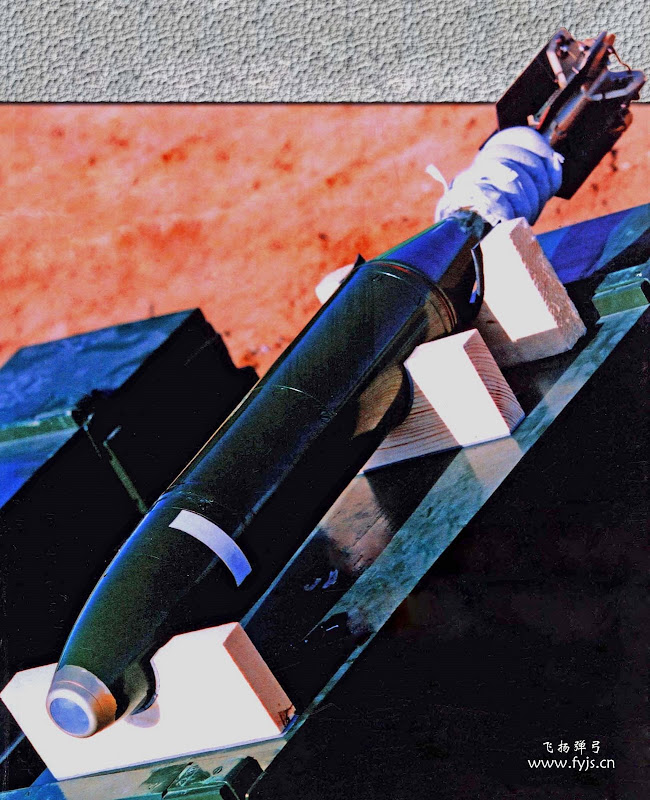
China just unveiled its 120mm Guided Mortar Munitions via a state-run magazine in beginning of September. This kind of 120mm guided munition can be fired from PLA's existing 120 Mortar systems. A typical Mortar company includes 6 120mm mortar system with additional laser guidance system (for frontier observer), fire-control computer (for commanding vehicle), synchronous communication devices and battlefield fiber digital commanding network.
Chinese official resource also describes the 120mm Guided Mortar Munition's operation sequence:
Step 1: When commanding vehicle receive fire request and the company prepare to fire in 60 seconds
Step 2: gunners receive firing characters from fire control computer and then manually load laser code, fuse mode and flight time through the setting button on the round body and finally adjust direction. Meanwhile, forward observers also receive these firing characters.
Step 3: The mortar system fired and flies to the target acquisition area.
Step 4: The forward observer designates the target with a laser guidance system and the mortar seeker begins to find laser energy.
Step 5: Seeker find laser radiation and lock the target.
Sept 6: By means of embedded impulse thrust motors, the mortar round maneuvers ballistic trajectory to impact the target
The specifications of China's 120mm Mortar munition can be described as:
Weight: 17-20KG
Kill radius: 20m
Range: <13km>5km
Fire-control computer weight: 1-3kg
Computing time: 1 second
Chinese resources said that the seeker is a simplified device also installed on 122mm, 152mm and 155mm howitzer munition. For this reason , the 120mm Guided Mortar probably can not reach the declared 2-3m CEP but 7-9m because the seek is fixed on the round body head without a gyroscope platform.
Unlike U.S XM395 PGMM (Precision Guided Mortar Munition)'s DASALS (Distributed Aperture Semi-Active Laser Seeker) and Israel IMI's DGPS (Differential Global Positioning System) for its Guided Mortar Bomb, China's 120mm Guided Munition can not be ranged into so-called High precision weapon but competitive for cheaper price.
Clearly, China unleashed its 120mm Guided Mortar Munitions for overseas markets in Middle East, South Asia and South America. If Iraq or Hizballah militants can get this killing weapon in black-market, U.S. and Israel land forces will have to deal with a more formidable game.
发表者
Johnathan Weng
位置在:
10:23 PM
0
评论
![]()
标签: ammunition, artillery

